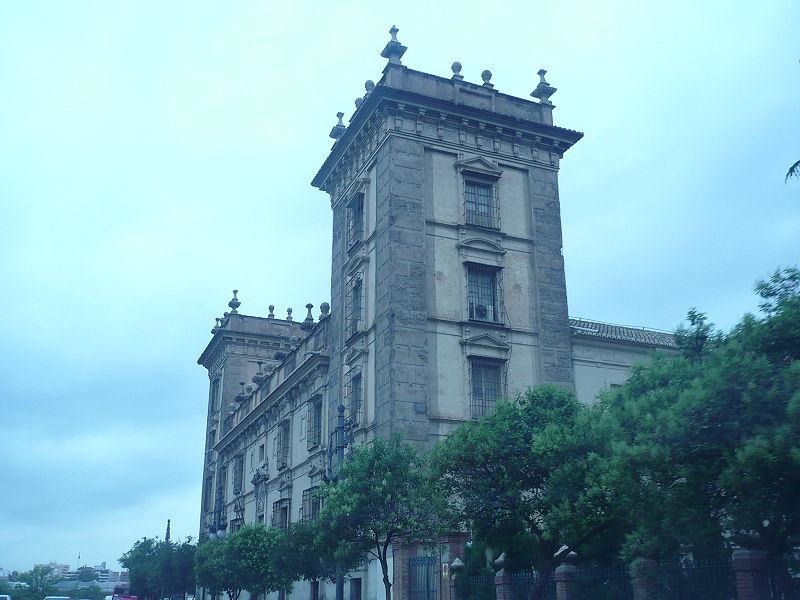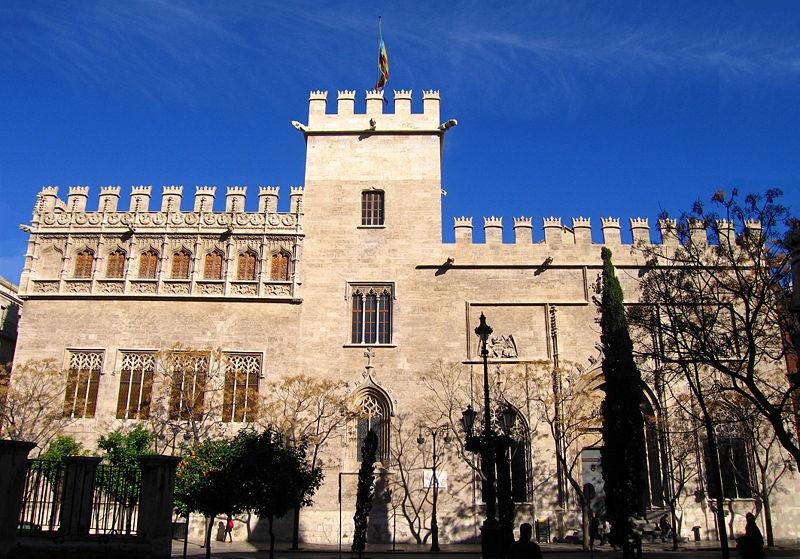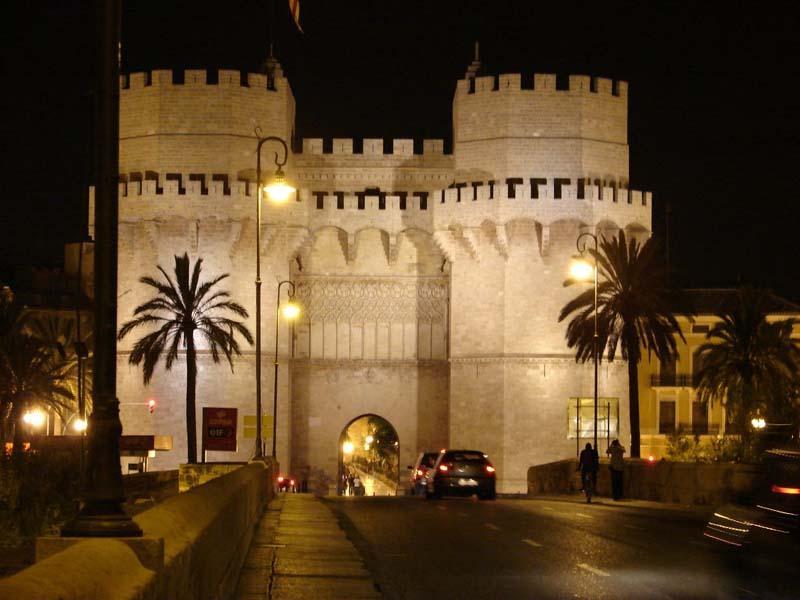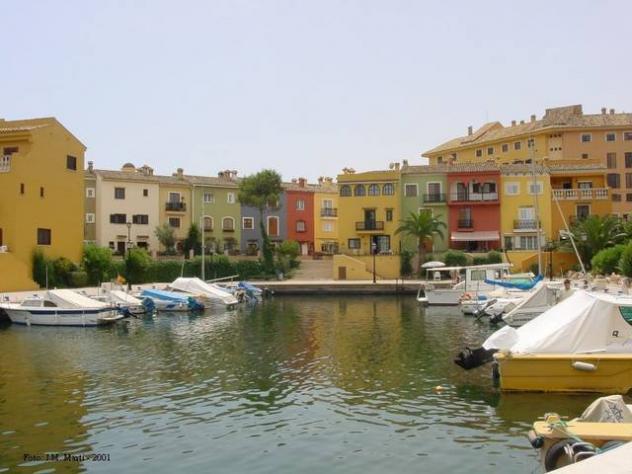Alboraya, Comunidade Valenciana, Spain
Suggest Place to Visit
3065
Track to location with GPS |
 |
The lands on which Alboraya sits were created during the Quaternary, a period in which man had already appeared, due to the materials carried by the Turia River and the Torrente and Carraixet ravines. [3]
Alboraya was a Muslim farmhouse that King Jaime I of Aragon granted to the bishop of Huesca, Vidal de Canyelles. Teresa Gil de Vidaure obtained the property through a land exchange with said bishop, with which the patrimony of Jaime de Jérica, his son and King Jaime II of Aragon, swelled. In 1331, it passed into the hands of Gilberto de Zanoguera, who founded the lordship of Alboraya. [3] During the 15th century, it came under the control of the Crown, with the depopulated area of Rafelterras being found in its term.
The church was built in the 15th century under the invocation of Santa María. Next to the Carraixet ravine there was a hermitage dedicated to the Virgin Mary of the Helpless; Its first building dates from the year 1414 and was ordered to be built by the General Council of Valencia in 1400, in order to consecrate the cemeteries where the executed and the homeless were buried. The current building is new.
The main activity is agriculture, and the most important crop is tigernut, which has made the horchata de Alboraya famous.
The population count for the year 1646 offers a count of 88 houses; Cavanilles figures the population, the year 1794, in 560 neighbors; in the mid-nineteenth century Madoz points to the number of 3,301 inhabitants; Sanchís Sivera, in 1922, reports 4,265.
Alboraya (in Valencian and co-officially, Alboraia) [1] is a municipality in the Valencian Community, Spain. It belongs to the province of Valencia and is located in the Huerta Norte region, being the second city in the region in population, after Burjasot. It is known as ´´El portal de la huerta´´ (´´El Portal de l´Horta´´) given its location and traditional activities, and it is recognized for its horchata and tigernut.
The municipal term still conserves large areas of orchards with intensive crops divided into eight items: Calvet, Desamparados, Mar, Masamardá, Masquefa, Milagro, Saboya and Vera. As the years go by, the extension of the orchard is reducing, due to urban pressure. The designation of the city of Valencia as the host city of the 2007 Copa América has meant an important development for the urbanizable land of the tertiary sector in the municipality of Alboraya, due to its proximity to the future regatta field, the availability of a port As a consequence of active sports and the current situation of its three industrial estates, an approximate percentage of 75% of the sailing teams have established their bases of operations for the sporting event in this town.
Alboraya can be accessed through Line 3 of the Valencia Metro, which has two stations in the town, Palmaret and Alboraya, as well as Line 70 of the EMT. Line 31 of the EMT arrives in the neighborhood of La Patacona and in the future the tram will arrive. The yellow buses of the AVSA company arrive at the Port Saplaya neighborhood from Valencia.
The City Council offers a local bus service that runs through the population centers of Alboraya, linking the town with Patacona and Port Saplaya seven days a week, with a frequency of approximately one hour.
Religious architecture
Door of the church of the Assumption.
.
Parish of the Asunción de Nuestra Señora: It dates from the 18th century, although in 1240 it already appears in the archives of the Cathedral of Valencia. It is of baroque style and medieval origin and forms a block together with the Abbey House. The façade is made of masonry, with the bell tower on the right. It consists of three naves with side chapels.
Hermitage of the Miracle of the Fish: It is located at the mouth of the Carraixet Ravine, in the neo-Gothic style, it shows a facade divided into three bodies, with pointed windows and a gabled roof, on the right side you can see a ceramic panel with the allusion the miracle supposedly occurred in July 1348 in this same place, with a single body with the sacristy behind and the choir above the door, with a large recreation area.
Hermitage of San Cristóbal: In the middle of the orchard, between the industrial estate and the Barranco del Carraixet, with a single body and the sacristy behind and the choir above the door.
Hermitage of Vilanova or Cristo de las Almas: In the middle of the orchard, of the former Vilanova farmhouse, highlight its transfer on the Penitential Via Crucis through Huerta de Alboraya, to the Parish Temple on Holy Monday, with a single body and sacristy to the right, with a wooded area for recreation.
Hermitage of Santa Bárbara: In the hamlet of the same name, in the middle of the orchard, with a single body with the sacristy behind, located within the neighborhood.
Hermitage of San Andrés or Sagrado Corazón de Jesús: Small hermitage of private property (known as the Rectoret), in the Rector's farmhouse, in the middle of the orchard, without worship.
Chapel of the Colegio de las Marianistas: In the Colegio de Santa María (Marianistas), at the entrance to Alboraya.
Capilla de Saplaya: On the ground floor of the Faro Building, next to a passage that connects the street with the inner mooring area.
Festivities [edit]
The Alboraya festive calendar is one of the most complete in the Huerta Norte region. The streets, neighborhoods and hermitages bring their special festive celebrations dedicated to their particular devotions.
Fallas: They are held together with those of the capital and Alboraya has 7 Fallas commissions:
Calvet Falla, adults and children
Miracle failure, child
Palmaret Falla, adults and children
Falla del Poble, adults and children
Falla de Rey Don Jaime, adults and children
and in the coastal neighborhoods:
Port Saplaya Falla, adults and children in Port Saplaya
Falla de la Patacona and Camino de Vera, adults and children in Patacona
Comments
We don´t have yet any comments about:
Alboraya
Alboraya
Be the first to leave a comment as it is very important to inform other people
Outros locais a visitar
Within a radius of 20 km from:Alboraya
Museum of Fine Arts of Valencia |
| 3,1 Km |
 |
Lonja de la Seda (Valencia) |
| 3,8 Km |
 |
Valencia |
| 5,4 Km |
 |
Hotel reservation near Alboraya within a radius of 20 km
Why to book with ROTAS TURISTICAS
The best prices
Our partnerships with the world´s largest operators offer research on the best market prices.
More options
At Rotas Turisticos you can book the hotel, buy the air ticket, book the transfer from the airport to the hotel and vice versa, book the local excursions, rent the car, take travel insurance and consult the places to visit and where to go.
Holiday Tips & Destinations
Hundreds of holiday destinations with all the options that allow you to easily choose the destination that best suits your dream vacation.
ROTAS TURISTICAS
Links






